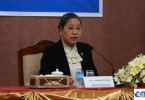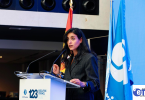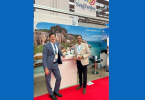A Step by Step Guide for Tourism Recovery during and after COVID-19
The unprecedented societal changes brought on by the COVID-19 pandemic are dramatically affecting tourism. It is too early to know the full nature and impact of these changes, but it is clear that they will be transformative for the entire planet, and every destination will need to re-create its tourism from the ground up.
Crises have phases
Every crisis situation is context-specific, including scale (global to national to local to sector to individual business), nature (natural, war, medical, etc.), extent (severity vs. ability to keep the event fairly localized), time frame (short to long term duration and impact), affected sectors (markets, destination or both) and stage of the event (incipient, rapid growth, peaking, getting better, second wave, recovery, post-event, etc.).
All crises have predictable phases:
o Pre-event and predictive– No indication as yet of the impending crisis, but time to be prepared and have a crisis management plan in place in the eventuality that an incident occurs
o Prodromal (early symptoms) – In most cases, early warning signs are evident, but are ignored or misinterpreted. Screening of media outlets can identify early warning signs. Now is the time to prepare/update plans and activate them, update training, prepare to respond.
o Emergency – The key rule of thumb does not make it worse. The safety of guests and staff is critical. Accurate and effective communications are important. Strategies and actions to protect the business need to be implemented. Its employees and the community it operates in must be considered.
o Crisis continuity – The crisis is ongoing. What are short term solutions that can be implemented? Care for staff and clients is essential. Monitor the situation to see what the longer-term implications and/or predicted duration will be. Prepare resilience plans.
o Recovery – Establish recovery objectives and timelines. Stratify and prioritize target markets. Work with intermediaries and the public. Be positive and honest in communication. Implement plans. Treat media, including social media as an ally. Demonstrate appreciation to others
o Resolution – What actions to take to recover as quickly as possible? What lessons have been learned? Are you prepared for the next crisis? Rapid recovery often occurs after an event.
During the Event
A range of actions can be undertaken during the event. Importantly, it must be appreciated that consumer confidence has been damaged and will not return until the event passes.
Strategic actions
Step back and plan for the relaunch. Evaluate the position and develop plans at a destination, corporate or property level.
Sharpen market research to identify strong segments likely to recover first, new markets or new segments in existing markets that can be actualized.
Develop a new branding strategy as the old one may be tarnished by the crisis.
Look at ways of diversifying the market post-recovery if overly reliant on one source.
Work closely with industry to develop a series of packages that can be launched at short notice. Packages can include special rates for airfare, accommodation, food, and beverage, etc.
Forward book through vouchers and coupons to keep some cash flowing into businesses.
Arrange mutually beneficial terms and conditions with suppliers. Make them part of the problem and the solution. Work out smart solutions and make real-time rearrangements.
Take this opportunity to restructure and open new avenues for business.
While price cuts can deliver a brief spike in volume, they can also result in long-term pain for any business that pursues this strategy.
Renegotiate contracts with intermediaries and OTAs.
Operational Issues
Finance
Secure additional funding to launch the recovery when the time is right.
Set up a fund to support re-training, short-term job search skills, support groups, etc.
Manage costs as much as possible. Work with suppliers to arrange suitable terms, cut non-essential services, etc.
Work with financial institutions for finance, credit and loan restructuring.
Try to minimize fixed costs.
Instill short-term cash flow monitoring discipline that allows cash flow predictions and intervene in a timely manner.
Stress test any tier one and tier two suppliers that may be impacted.
Extend credit or postpone payments.
Marketing
Severely restrict all marketing activities – consumer confidence has been damaged and will not return until the event passes. Advertising and heavy discounts do not work if consumers are unwilling to travel.
Maintain channel promotions if costs are minimal as it will maintain a good relationship with suppliers.
Utilise social media effectively.
Focus on the most cost-effective booking channels. Ensure that book-direct perks are prominently displayed throughout websites and on social media outlets.
Focus on increasing revenue from every booking. Consider launching length of stay offers.
Reduce and restructure advertising budgets.
Refocus budget on domestic and nearby markets.
Aim for the local market and promote staycations.
Promote safety to international tourists.
Staffing
Keeping tourism staff in their jobs and develop mutual solutions as much as possible. Empower them to make decisions and make mutually beneficial arrangements.
Try no paid leave or send people on leave, rather than letting them go. Once staff leaves it will be hard to replace them when things get better. You risk losing good people.
Release casual and part-time staff first and essential staff last.
Support staff development especially for people who have free time and can work from home.
Monitor the mental health of staff and intervene if needed.
Implement flexible working patterns, work remotely, staff self-isolation, reduced workdays, etc.
Support equipment to facilitate effective work from home solutions.
Support teleconferencing and video conferencing technology.
Retrain staff to multi-task.
Reassure and involve staff as essential stakeholders.
Protection of workers from unemployment and loss of income (short-time work schemes, upskilling and reskilling programs) and support for self-employed tourism stakeholders.
Freeze pay rates.
As an emergency action – replace highly paid employees with new low paid employees, but be careful, for short term fixes may cause long term problems.
Increase outsourcing if cost-effective
Operations
Facilitate re-bookings to avoid, where possible, cancellations. Everyone is hurting. Do not add insult to injury. Reconsider cancellation policies.
Close non-essential operations or scale back operations. For example, hotels with multiple food outlets can close one or more of the outlets. Close floors. Reduce services.
Offer ‘Corona Vouchers’, whereby travelers and tourists who had to cancel their trip will be reimbursed with this voucher instead of giving them their money back. This voucher can be used for any other trip and is valid during one year after the issue. This should be optional.
For meetings and events, hoteliers should liaise with the event organizers to postpone the event instead of accepting outright cancellations.
Postpone non-essential building maintenance.
Postpone non-essential systems maintenance.
Utilize staff skills in tasks outside their normal role.
Have action plans ready in case guests/clients become ill.
Implement appropriate screening measures on check-in.
Enhance cleaning and sanitation.
From buffet to plated food.
From shared food to individual.
Implement technological solutions to address fears (contactless and robotized access, information) and reduce unnecessarily human close contacts.
Consumer Confidence
Wait and watch consumer sentiment to see when it changes.
Reassure consumers that you are doing all you can to make the destination/business safe.
Community
Develop public relations strategies and implement them at a community level to talk about the benefits of tourism and to remind people to welcome tourists when the time is right.
Look after affected people as much as possible.
Work closely with health authorities to minimize the spread of disease.
Offer support to the elderly and most affected stakeholders through the delivery of food or shopping or undertaking critical tasks that require available equipment. Offer training and development training for people to develop skills and work closely with you in the future.
Deliver food and offer hospitality to front line workers.
Launch public welfare activities, whereby front line workers can gain free or heavily discounted entry to tourism attractions or scenic spots.
Promote, shape, and implement closer cooperation and trust between and with industry and non-industry partners at large, including NGOs.
Communications
Have a single point of contact and a single voice to communicate about the issue.
Accurate and timely information is critical for everyone as-is analysis of the trends.
Tell the truth and be transparent.
Stay on message and do not speculate.
Challenge untrue statements.
Do not impose a media blackout.
Respond in the same medium.
Develop holding statements – release information that you do have.
Respond quickly.
Use social media and continually monitor the online conversation. They are ideal to provide up to date information.
Maintain regular contact with suppliers regarding their capability to deliver goods and services.
Government Relations
Promote policy solutions for recovery and avoidance/mitigation in the future.
Promote solidarity.
Look for big picture policy initiatives that can be considered, such as visa waiver changes.
Lobby government for a grace period on local taxes.
Fast and easy access to short- and medium-term loans to overcome liquidity shortages.
Fiscal relief (both at source market and destination level), starting with SMEs and extending to operators of all sizes.
Immediate passing of temporary airport slots waiver.
Organize civil action to convey a unified voice to the government.
Lobby for longer-term actions such as simplification of visa rules, reducing or waiving travelers’ taxes and supporting economically hit destinations with promotion and marketing to attract tourists.
Lobby government for financial help to protect the incomes of workers who will be temporarily laid off.
Seek cash flow assistance to support large and small tourism stakeholders.
Consider initiating the formation of a public-private partnership crisis management team to manage crises and develop recovery strategies.
Government interventionism to stimulate local demand for tourism through the provision of a voucher for each worker and this voucher that can be used only for domestic tourism consumption
Try to encourage grants and forgivable loans and try to discourage non-forgivable loans. They only delay the problem but do not resolve it.
Post-event
Recovery plans can begin during the event but must be implemented effectively post-event,.
What can we as academics do?
Volunteer your services as money is very limited.
Work collaboratively with others. Now is the time to cooperate.
Provide targeted research backup, including to inform policy changes.
Share our collective research with DMOs and industry.
Promote a different way to conduct tourism.
Policy
Rebuild trust in a concerted and cooperative effort involving government, DMOs, and industry.
Reconsider the balance between volume and quality of target markets for tourists.
Develop system-wide recovery strategies.
Develop system-wide crisis strategies.
Identify and focus on sustainable competitive advantages.
Communicate the benefits of tourism to the local community.
Mitigate any tendency to tourist phobia and racism involving tourists from certain regions.
Sustainability
Promote more sustainable actions.
Be humble and appreciate that the commercial tourism sector is the facilitator of experiences and not the experience itself.
Tourism can be a regenerative industry locally, nationally and internationally. Encourage relevant policy development.
Marketing
Relaunch the destination/product.
Launch packages and promotional specials that have been developed during the event.
Progressive market expansion aiming at cured markets first and then expanding to more markets.
Target loyal markets.
Work on local MICE sector.
Focus initially on domestic and nearby international markets. There may be country boundary issues to deal with.
Social networking – Instagram, Facebook, etc. with good news stories.
Focus on business travel – it is far less discretionary.
Follow PATA’s nine-step marketing and Communication process:
o Step 1: Get the prime message out – We are open for business; tourists are welcome and wanted;
o Step 2: Setting out the facts: – Our destinations/hotel/tour/ attraction/flights are operating; outline restrictions and limitations;
o Step 3: Complementary alliances with principals. -Joint arrangements with hoteliers, resorts, restaurants, attractions, land tours, and air links; value-added arrangements between complementing principals;
o Step 4: Restoring confidence in source markets. – travel agents and travel writers’ familiarization trips – choose opinion leaders;
o Step 5: Protecting profitability during marketing recovery: – offer incentives which will enable the business to sustain profitability – value add rather than discount;
o Step 6: Re-image the business and the destination – re-theme advertising and promotion;
o Step 7: Incentives which attract tourists – value-added products;
o Step 8: Publicize the positives – positive news of resurgence of tourist arrivals, rebuilding and enhancements of infrastructure;
o Step 9: Reporting and monitoring progress – publicize the changes and enhancements made.
Integration
Work with transport providers to reduce barriers to entry.
Coordination by governments at all levels (national, state, regional, local) to deliver a consistent message to the consumer.
Reassure the local community.
Community
Buy goods from local producers.
Build an online platform to connect local food producers and the industry.
Altruism and solidarity.
Encourage VFR to build traffic and link with resident needs to visit family following any lock-down.
Encourage local residents to visit the local attractions or spots first. People are more aware of the real situation of the local epidemic, so they are more confident to have some tourism-related activities with family in local areas.
Consumers
Allow people with antibodies against the coronavirus to travel freely if the issue is still unresolved. Have them bring a certificate issued by their home country.
Assure consumers the destination is safe.
Remind them of any actions the destination may still be implementing (such as virus checks, other security measures, etc.).
Explain sanitization processes.
Build on trust and relationship.
Promote sustainability, respect nature.
Educate tourists not to damage the physical and social environment.
Emphasis on service quality by offering the true meaning of hospitality.
Be prepared for a strong rebound in demand. Like a coiled spring, the harder it is depressed, the stronger it bounces back.
Consulting: Safertourism.com Source: TRINET






